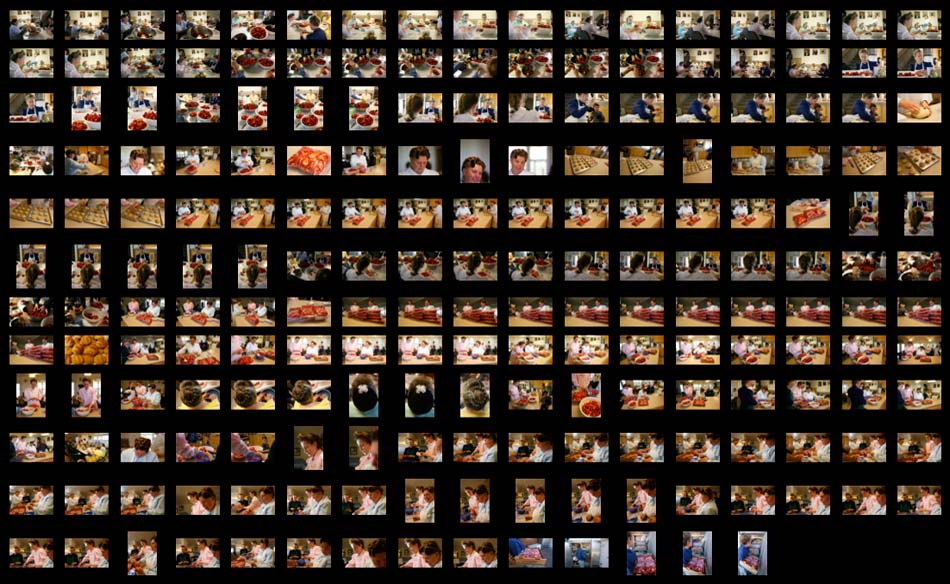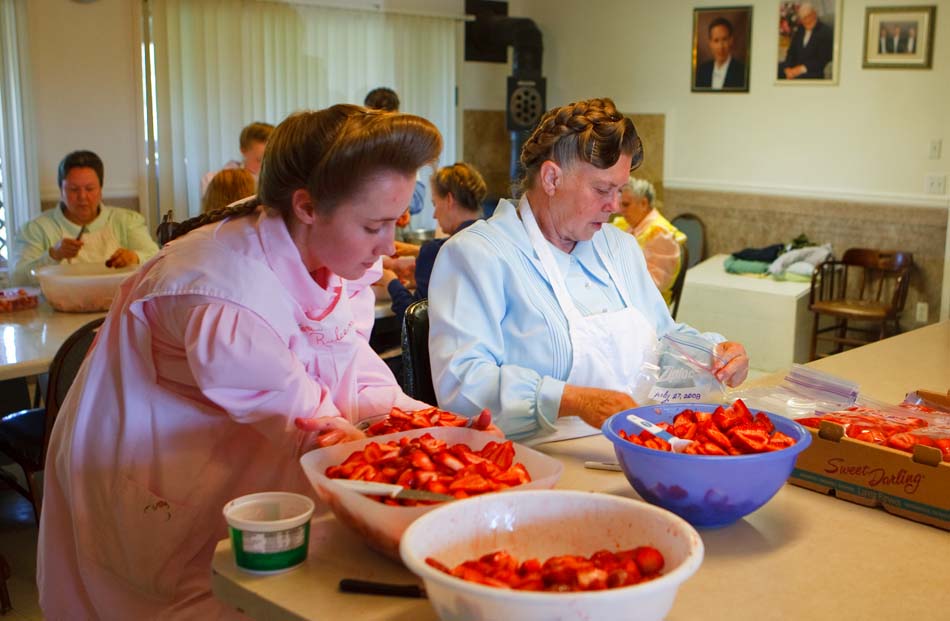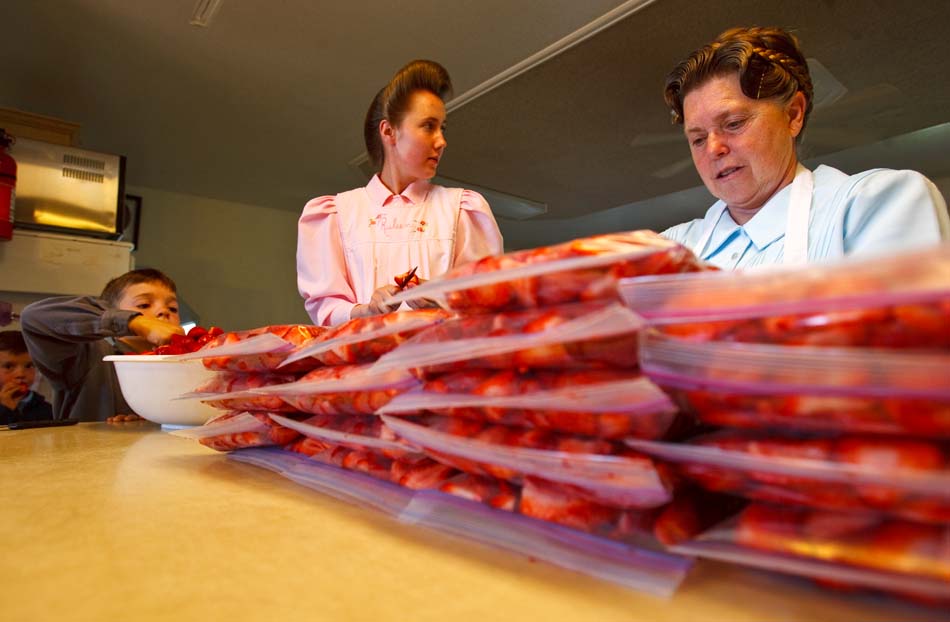201 photographs I made in the FLDS house in Westcliffe, Colorado, as several women sliced and bagged strawberries.
Someone sent me a question about editing, asking, “How do you know that ‘
this is the photo‘??? Just wondering if it’s a great talent, or does it just look good or what?”
There are two steps to finding the great photo: Shooting and Editing.
1. Shooting. When I’m photographing a situation like this, I’m looking for the three things that make up a great documentary photograph.
A. Dramatic and storytelling elements (the content). Obviously there will be few dramatic moments when the subject is food preparation, but there might be small moments where people interact or show a little emotion (a laugh, a smile, etc.)
Storytelling elements in this case that would be things like the portraits of FLDS leader Warren Jeffs on the wall and the unique hairstyles and dress of the women in the photo above. Another storytelling element present is the communal effort, so showing a lot of people in the photograph illustrates that.
B. Graphic design (the art).
This photograph has strong lines, coupled with the moment of the boys grabbing a snack.
Good graphic design to me is clean and functional, drawing the viewer’s eye across the image and to the points you want to emphasize without including a lot of distracting elements. In this situation the better photographs have a nice design and structure to them, and that’s what will separate the good from the bad.
C. Good technique (great lighting, perfect exposure and focus).
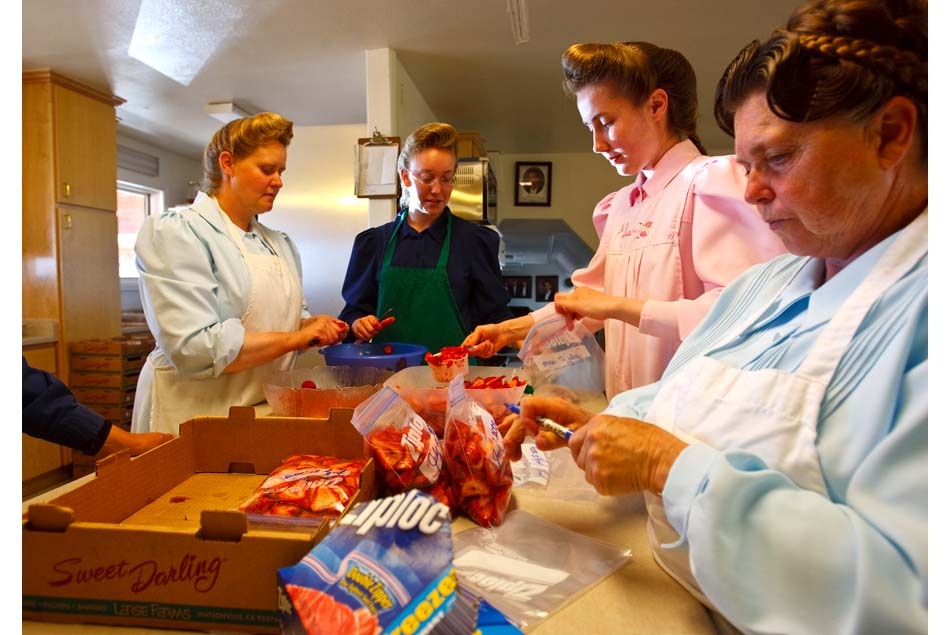
In today’s modern fluorescent world, good light indoors is hard to come by. So when I noticed the light coming through the window on this young woman’s face, I worked it for a while shooting a lot of loose and tight frames. It’s certainly not amazing light, but it’s a small detail that makes it a better photograph.
I know that these three examples are very subtle examples of the concepts I’m talking about. But maybe that will help you to look closely at what makes them stand out. That’s how I look at photographs. I look at all of the small details that make up the photograph. And the best photographs are strong in all three categories (content, art, and technique).
2. Editing. Now the shoot is over and I have to go through the photographs to find what I like. As you can see in the big image up top, when photographing I’ll work an angle for quite a while as I try to make the best photograph I can from a promising situation. Some work and some don’t. But it’s only in the editing phase that you find out for sure.
In the editing workflow, I’ll take the photos from any given angle and look at them all, eliminating the weaker ones until I am down to the strongest (the selects). After pulling selects the entire take I’ll look at them all and whittle that set down to a final set, which hopefully are the best of the shoot.
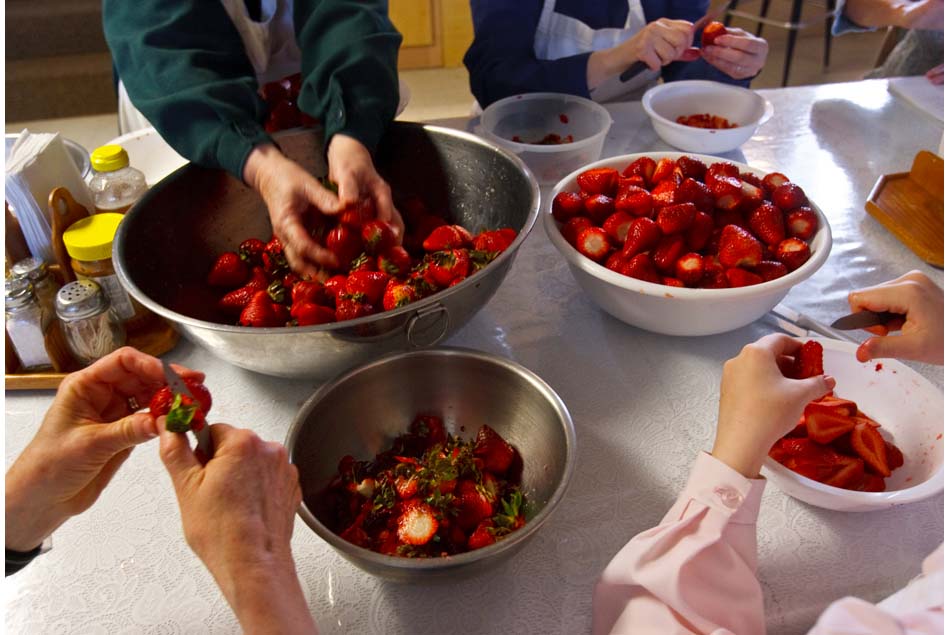
In my own workflow, I like to edit quickly, acting on instinct. Too much pondering gets me stuck and takes me away from the way that photographs are absorbed by readers (instantly, for the most part). But to be honest, sometimes I can’t decide between two photographs. That’s where a second opinion becomes very valuable. My colleagues and photo editors have always been a big help in that regard.
